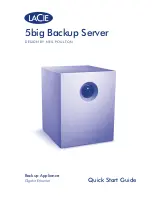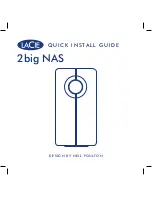
IPTV EPG-Server
EN
4
•
Install the unit in a dry location without infiltration or condensation of water. In case of the formation of
condensation wait until the system is completely dried.
•
Do not expose it to dripping or splashing.
•
If any liquid should accidentally fall into the cabinet, disconnect the power plug.
•
Install the head-end station where it is protected from direct exposure to sunlight
•
Install the head-end station not within the immediate vicinity of heat sources
•
Do not install the head end in cabinets or recesses which are not ventilated.
•
Do not place any vessels containing liquids on the head-end station.
•
Do not place anything on the head-end station which could initiate fires.
To avoid any risk of overheating
•
Install the unit in a well aired location and keep a minimum distance around the apparatus for sufficient
ventilation
•
Do not place anything on the unit that might cover the ventilation holes.
•
Do not install the product in a dusty place
•
Use the apparatus only in moderate climates (not in tropical climates)
•
Respect the minimum and maximum temperature specifications
•
Ensure that the headend station is adequately ventilated.
To avoid any risk of electrical shocks
•
Controller must be correctly grounded according to applicable national regulations.
•
For a complete disconnection from the mains, the mains plug must be pulled out of the mains socket. Ensure
that the mains plug can be pulled out without difficulties.
•
Pull out power plug when making connections of cables.
•
To avoid electrical shock, do not open the housing.
To avoid interferences with LTE services in Europe
•
Do not select a channel higher than UHF 48 in countries with LTE II / 700 operation
•
Do not select a channel higher than UHF 60 in countries with LTE I / 800 operation
•
Use coaxial cables with screening effectiveness of >85dB (Class A) at least or >95dB (Class A+)
WEEE disposal
Electronic devices should never be disposed of in the household rubbish. In accordance with directive
2002/96/EC of the European Parliament and the European Council from January 27, 2003 which
addresses old electronic and electrical devices, such devices must be disposed of at a designated
collection facility. At the end of its service life, please take your device to one of these public collection
facilities for proper disposal.




































